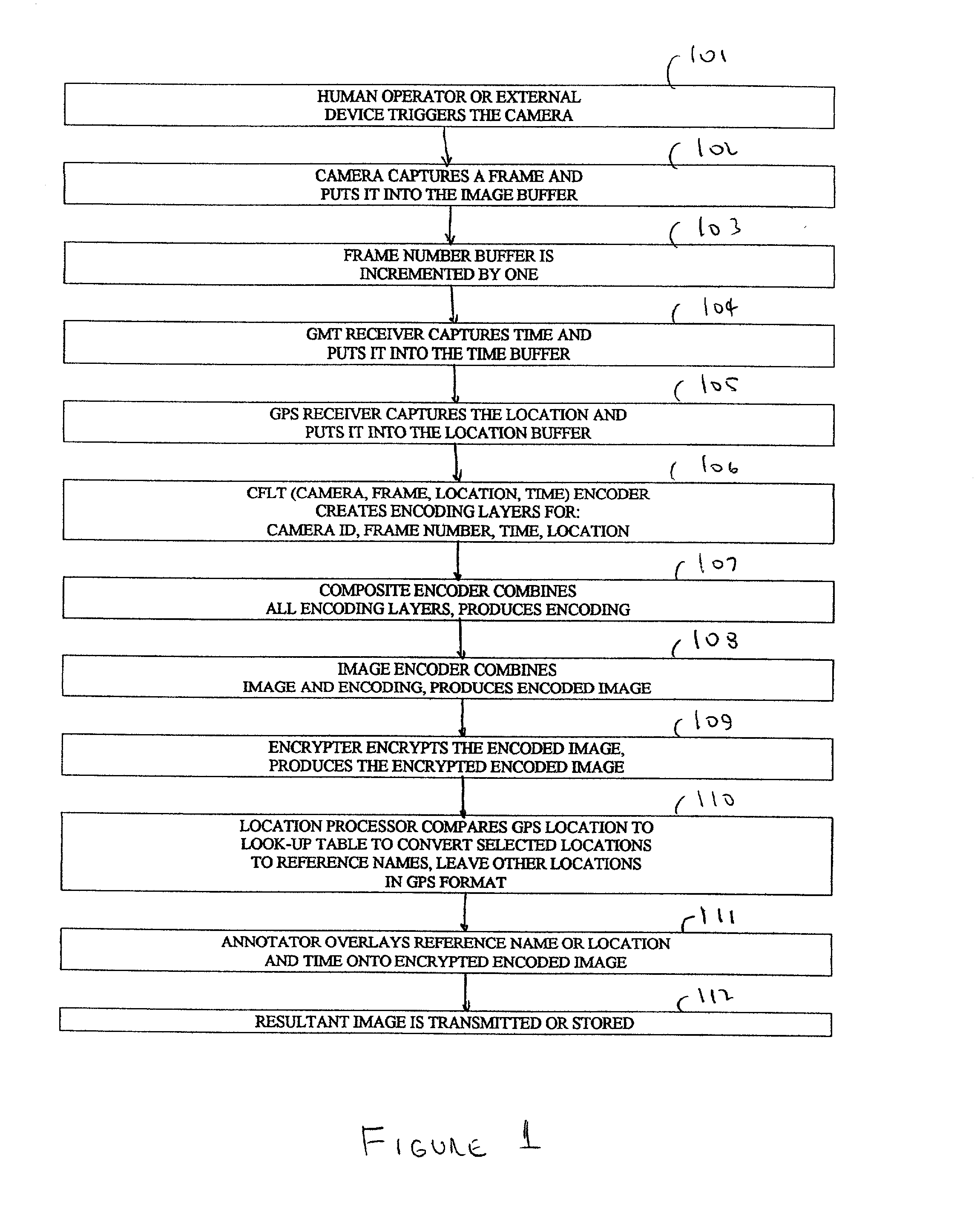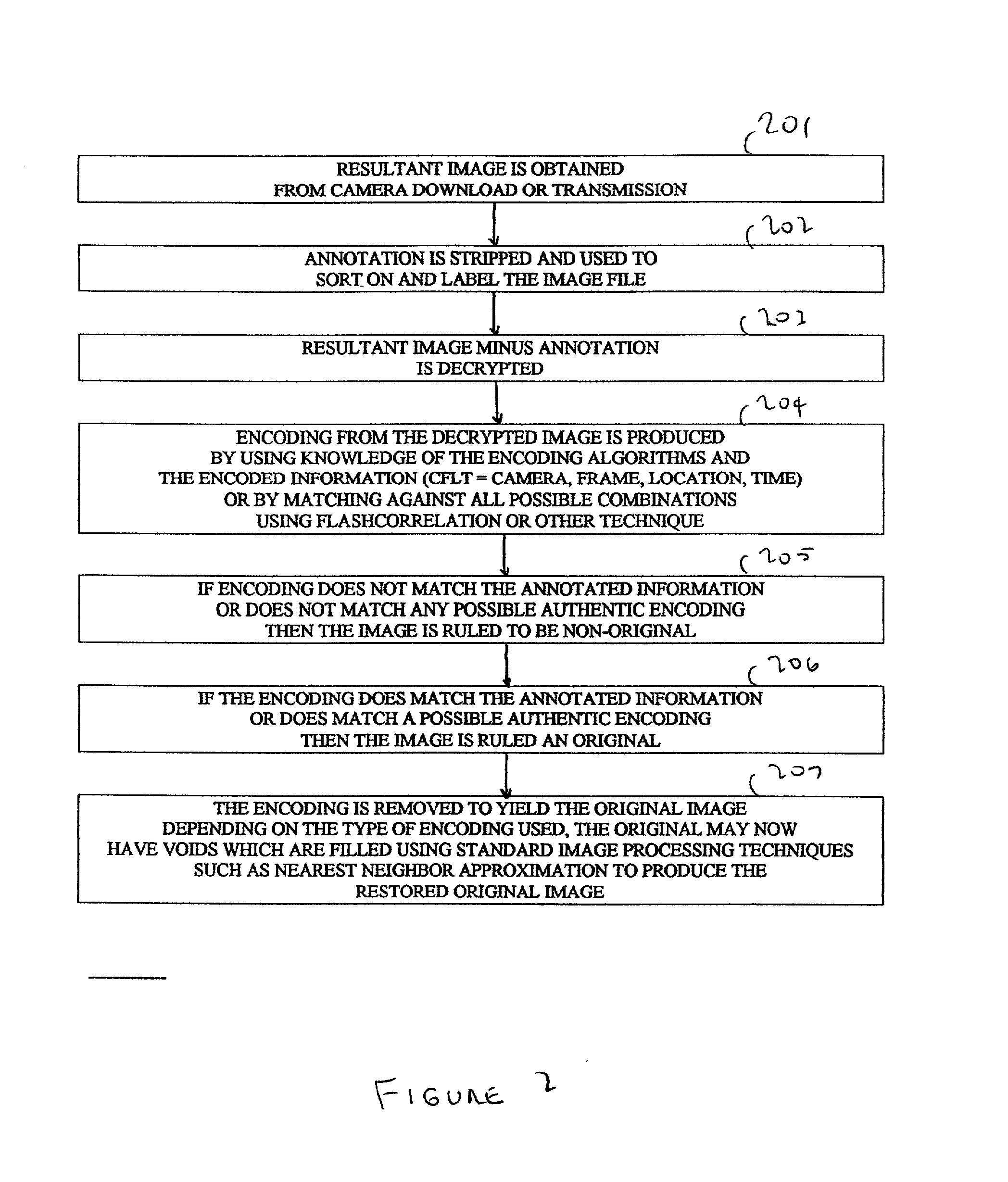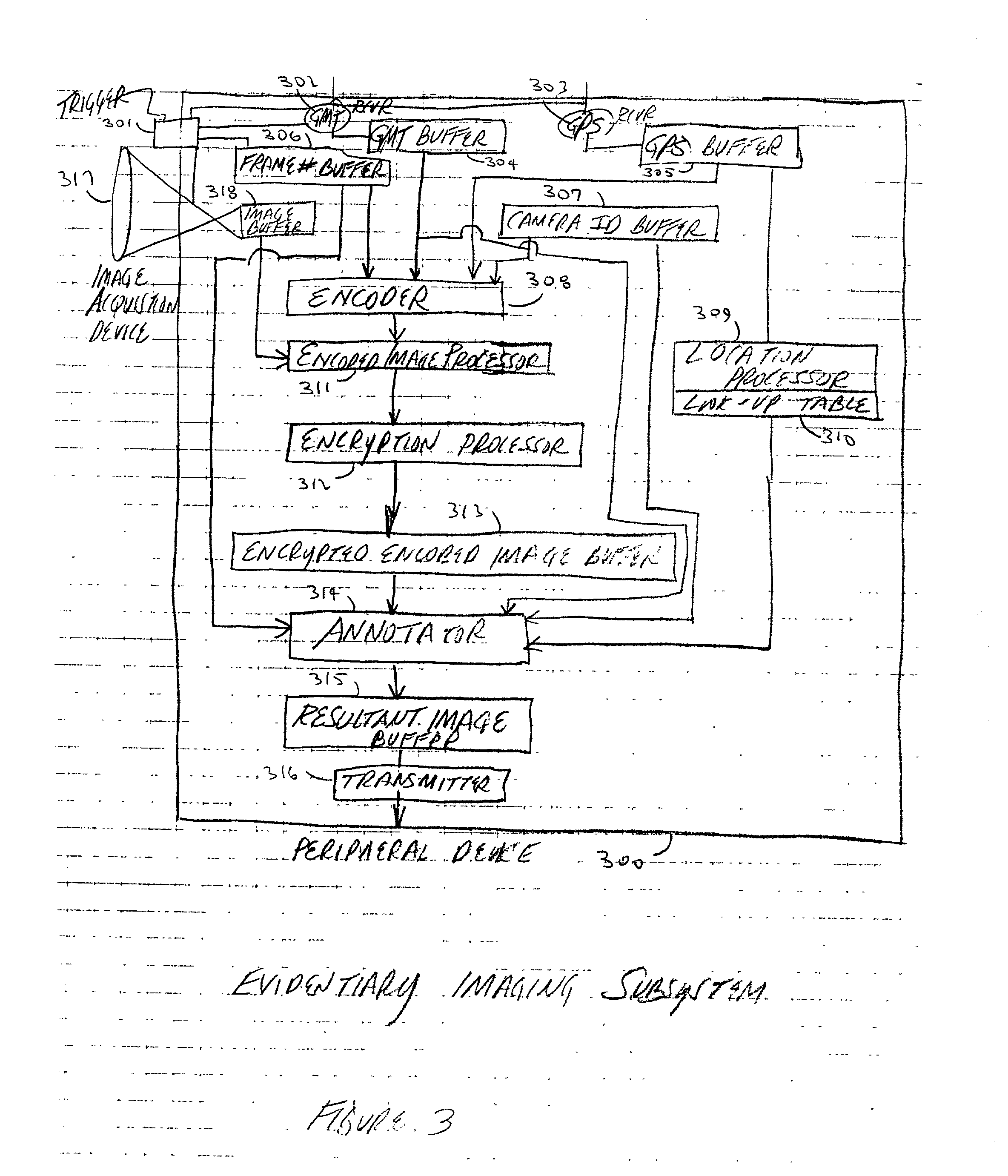Digital imaging system for evidentiary use
a digital imaging and evidentiary technology, applied in the field of digital imaging systems for evidentiary use, can solve the problems of being more vulnerable to undetected manipulation in whole or in part, and achieve the effects of improving the chain of custody of collected information, increasing system security, and simplifying training
- Summary
- Abstract
- Description
- Claims
- Application Information
AI Technical Summary
Benefits of technology
Problems solved by technology
Method used
Image
Examples
second embodiment
[0085] An advanced version of the Second Embodiment has both GMT and GPS receivers, and incorporates a list of locations and a processor which enables them to annotate alphanumeric text instead of geographical coordinates for location. It can include a processor which takes the GPS data and interprets it to the closest location in a list, thereby annotating a country / city / street or landmark designation rather than geographical coordinates onto the image.
[0086] A Third Embodiment (not shown) provides for secure transmission of imagery over the internet or other network. The sender submits his personal ID, the ID of the intended recipient and the image to be transmitted. The system encodes his ID and that of the recipient and may also encode the date and time and ID of the transmitting node into an Encoded Data Array. It scrambles the image using a scrambling algorithm key comprised of the sender ID, recipient ID, date and time. It then superimposes the Encoded Data Array and transmit...
fourth embodiment
[0087] A Fourth Embodiment is an evidentiary imaging system with provision for determining that a given image was in fact produced by a particular camera at a particular location and time, and that the image has not been altered. Each data item: camera ID, location, date, and time can be separately confirmed by a search for an FCA when the encoding of that data item is flashcorrelated against the Resultant Image. For the image to be authentic and not altered, the Resultant Image and each of the Encoded Data Arrays is divided into cells, and each pair of corresponding cells is flashcorrelated. A perfect or at least strong FCA, depending upon the level of system noise to be tolerated, must occur for each cell. Multiple iterative tests can be performed by varying the FCA parameters, in particular the angle of rotation between the encoding image and the Resultant image. Since FlashCorrelation.RTM. is a sampling technique, use of a range of parameters for testing authenticity helps to de...
PUM
 Login to View More
Login to View More Abstract
Description
Claims
Application Information
 Login to View More
Login to View More - R&D
- Intellectual Property
- Life Sciences
- Materials
- Tech Scout
- Unparalleled Data Quality
- Higher Quality Content
- 60% Fewer Hallucinations
Browse by: Latest US Patents, China's latest patents, Technical Efficacy Thesaurus, Application Domain, Technology Topic, Popular Technical Reports.
© 2025 PatSnap. All rights reserved.Legal|Privacy policy|Modern Slavery Act Transparency Statement|Sitemap|About US| Contact US: help@patsnap.com



